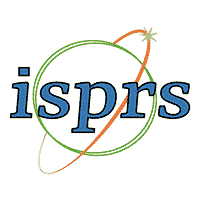Topic Menu
► Topic MenuTopic Editors



Geospatial Knowledge Graph
Topic Information
Dear Colleagues,
In the past two decades, the knowledge-graph-based approach has been widely used in GIScience, since it provides an explicit and formalized representation of geospatial data. At the core of solutions based on knowledge graphs, we typically have an ontology to provide semantics to the data. Many researchers proposed geo-ontologies and geospatial knowledge graphs to represent domain knowledge, to support geospatial data integration, and to facilitate geospatial analysis. The purpose of this Topic is to collect high-quality research results about geospatial knowledge graphs, ranging from foundational theories to practical algorithm and tools, and to novel applications. The areas to be covered in this research topic may include, but are not limited to:
- Geospatial knowledge graph construction;
- Geospatial data integration through knowledge graphs;
- Geospatial ontologies;
- Querying geospatial knowledge graphs;
- Deep learning over geospatial knowledge graphs;
- Visualization of geospatial knowledge graphs;
- Systems for geospatial knowledge graphs;
- Applications of geospatial knowledge graphs.
Dr. Guohui Xiao
Dr. Yu Feng
Dr. Linfang Ding
Dr. Younes Hamdani
Topic Editors
Keywords
- knowledge graphs
- geospatial knowledge graphs
- geospatial ontologies
- semantic web
Participating Journals
| Journal Name | Impact Factor | CiteScore | Launched Year | First Decision (median) | APC |
|---|---|---|---|---|---|

Geomatics
|
- | - | 2021 | 21.8 Days | CHF 1000 |

ISPRS International Journal of Geo-Information
|
2.8 | 6.9 | 2012 | 36.2 Days | CHF 1700 |

MDPI Topics is cooperating with Preprints.org and has built a direct connection between MDPI journals and Preprints.org. Authors are encouraged to enjoy the benefits by posting a preprint at Preprints.org prior to publication:
- Immediately share your ideas ahead of publication and establish your research priority;
- Protect your idea from being stolen with this time-stamped preprint article;
- Enhance the exposure and impact of your research;
- Receive feedback from your peers in advance;
- Have it indexed in Web of Science (Preprint Citation Index), Google Scholar, Crossref, SHARE, PrePubMed, Scilit and Europe PMC.


